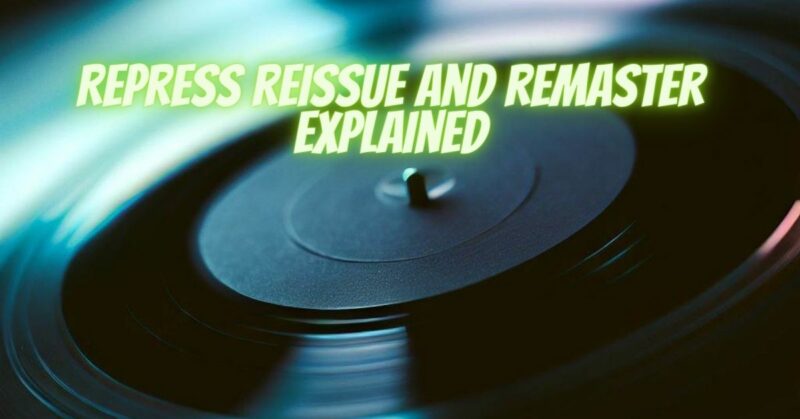As the vinyl resurgence continues to captivate music enthusiasts, terms like “repress,” “reissue,” and “remaster” frequently appear when discussing vinyl releases. These terms can be confusing, and understanding their distinctions is essential for vinyl collectors and audiophiles. In this informative article, we explore the meanings of repress, reissue, and remaster, shedding light on the various aspects of vinyl releases.
Repress: A Second Run of the Original Pressing
A repress refers to a subsequent run of an existing vinyl release using the same stampers and master plates as the original pressing. In other words, it is a reissue of the original record without any alterations or changes to the audio or artwork. Represses occur when demand for a particular vinyl release exceeds the initial run, prompting the record label or manufacturer to produce additional copies to meet the demand.
Reissue: A New Edition of a Classic Album
A reissue, on the other hand, involves releasing a vinyl album again after a considerable period, often years or even decades after its original release. Reissues can be sourced from the original analog tapes or digital files, and they may undergo additional mastering for improved audio quality. The purpose of a reissue is to make classic albums available to a new generation of music lovers or to cater to collectors seeking high-quality reproductions of iconic releases.
Remaster: Enhancing Audio Quality for Modern Playback
Remastering involves reprocessing the original audio source to improve its quality, dynamic range, and sonic characteristics. This process is typically done using modern technology and advanced mastering techniques. The goal of remastering is to enhance the audio for modern playback systems, ensuring that the music sounds vibrant and detailed on contemporary equipment.
Key Differences:
- Audio Alterations: A repress retains the same audio and artwork as the original pressing, while a reissue may involve using different audio sources or mastering for improved sound quality. A remaster specifically focuses on enhancing the audio quality of the original release.
- Purpose: A repress is primarily done to meet demand for a popular release, while a reissue aims to reintroduce a classic album to the market. Remastering is carried out to optimize the audio for modern listening experiences.
- Frequency: Represses can occur shortly after the initial release, while reissues and remasters typically occur after a significant time has passed since the original release.
Collectors’ Considerations:
For collectors and vinyl enthusiasts, understanding the distinctions between represses, reissues, and remasters is crucial when searching for specific releases. Collectors may prioritize original pressings for their historical significance, while reissues and remasters can offer improved audio fidelity and accessibility to timeless classics.
In conclusion, represses, reissues, and remasters are distinct facets of vinyl releases, each serving a unique purpose in the vinyl market. A repress provides additional copies of an original pressing, while a reissue reintroduces classic albums to new audiences. Remastering enhances the audio quality for modern playback. Understanding these terms empowers vinyl collectors and audiophiles to make informed decisions when curating their vinyl collections. Whether seeking original pressings for their historical value or embracing remasters for improved sound quality, vinyl enthusiasts can continue to immerse themselves in the timeless allure of analog music with renewed appreciation. Happy spinning!

